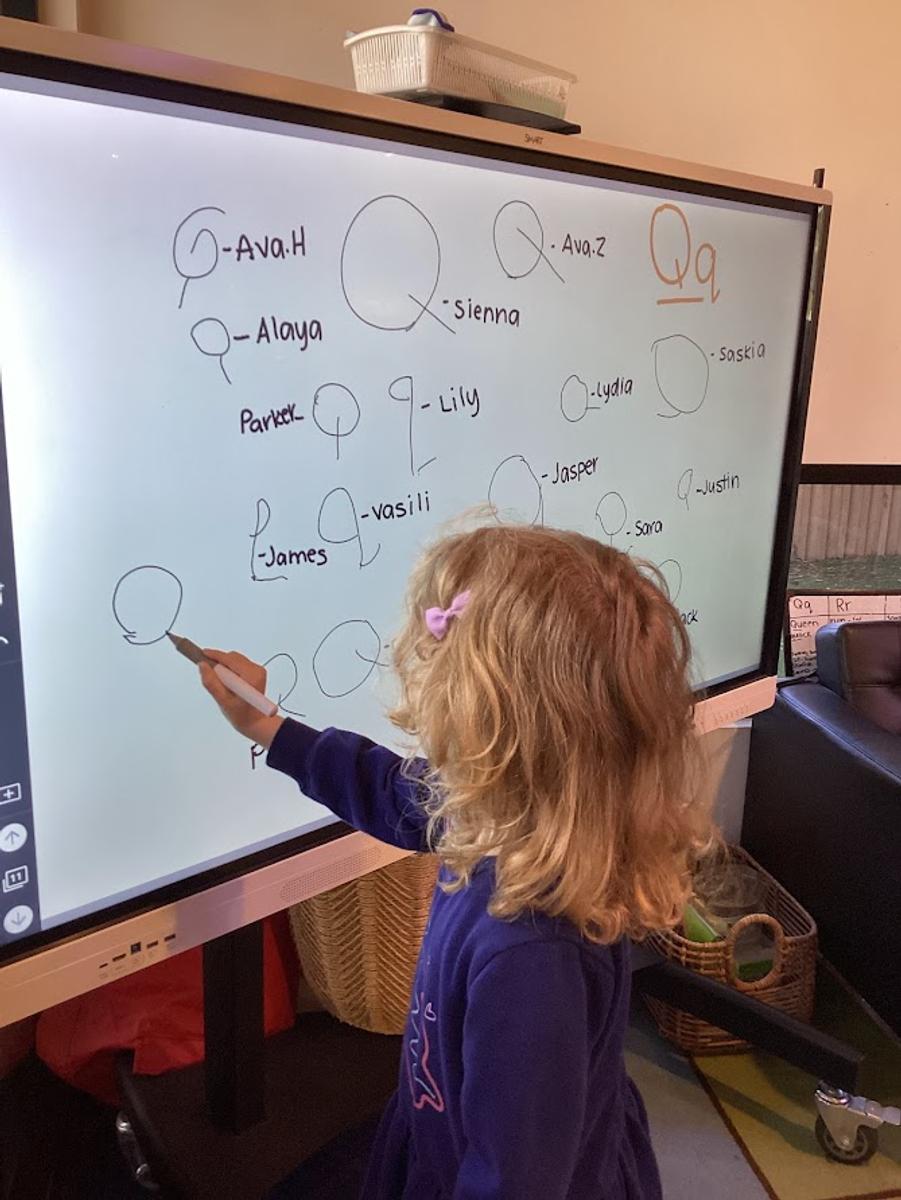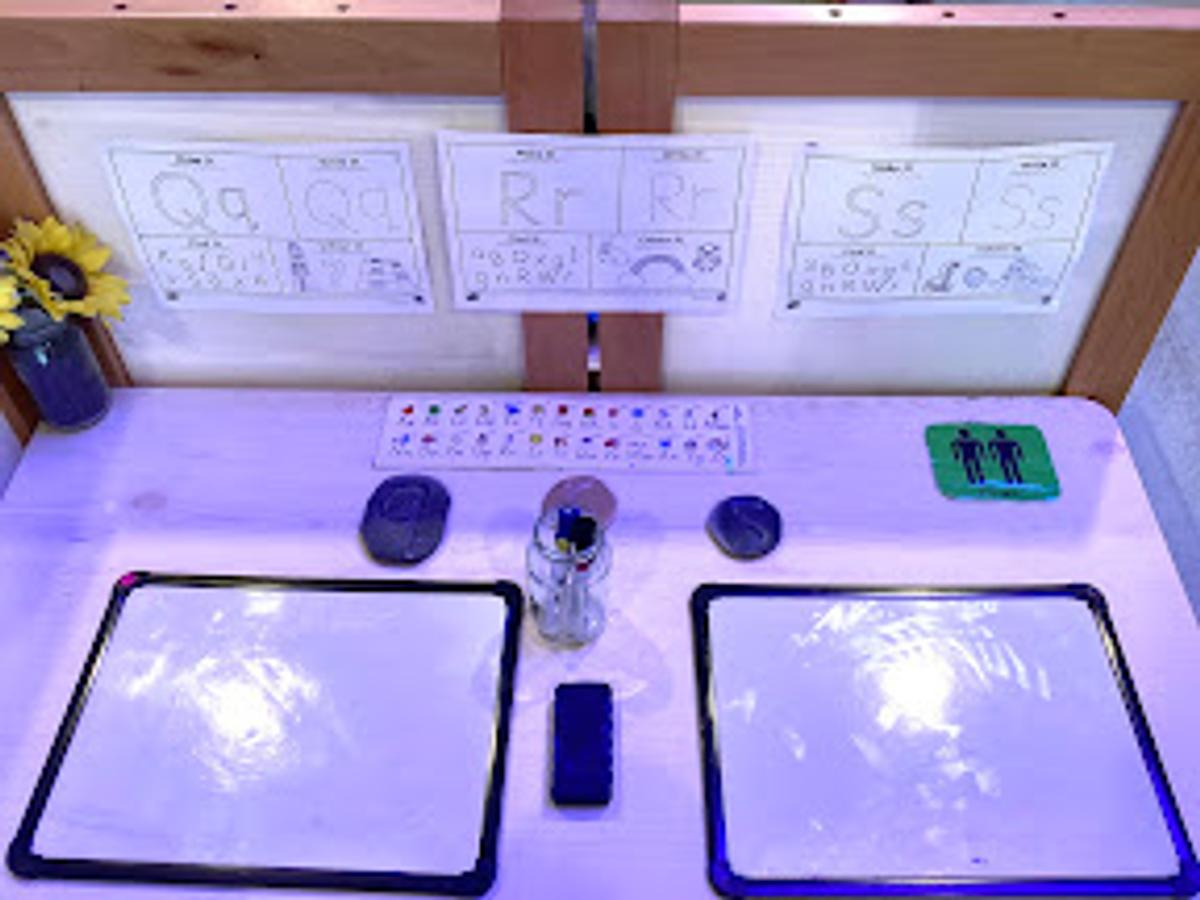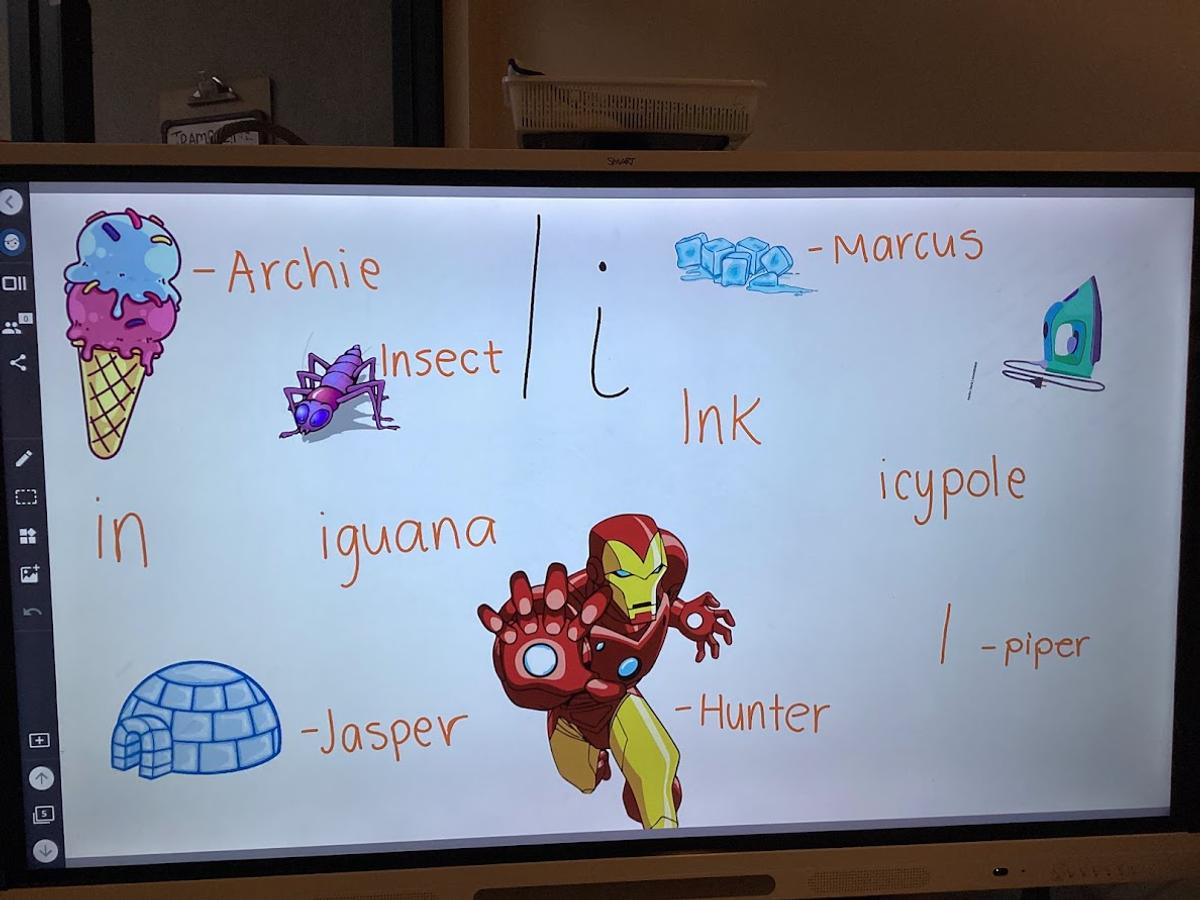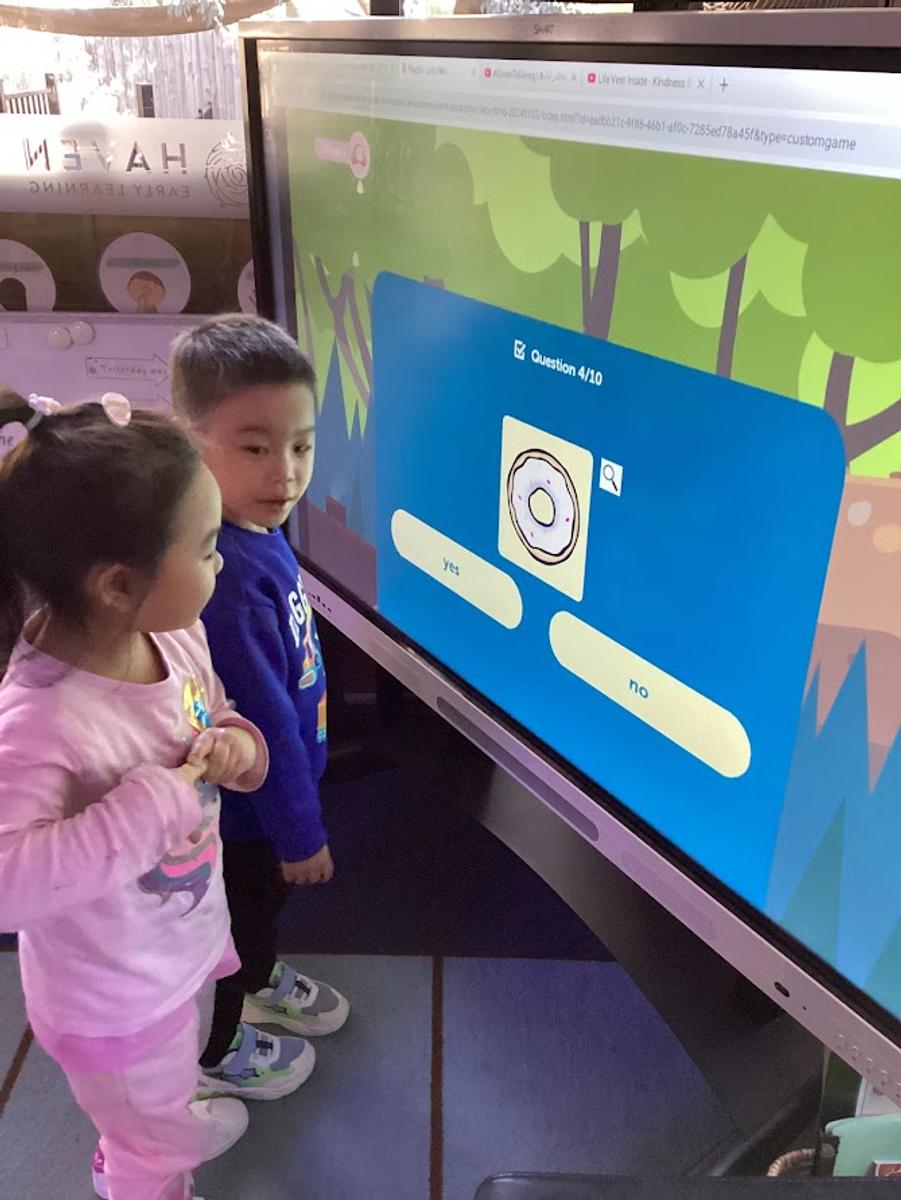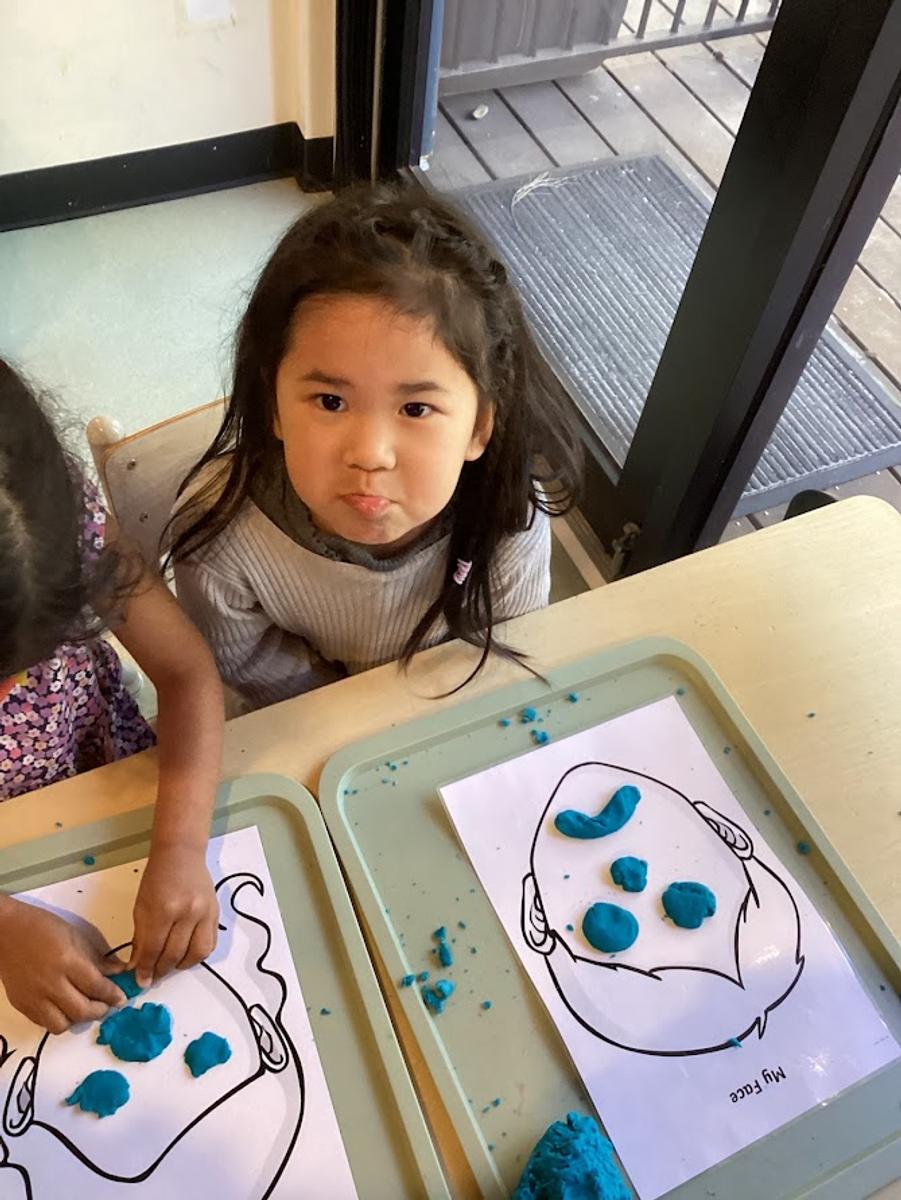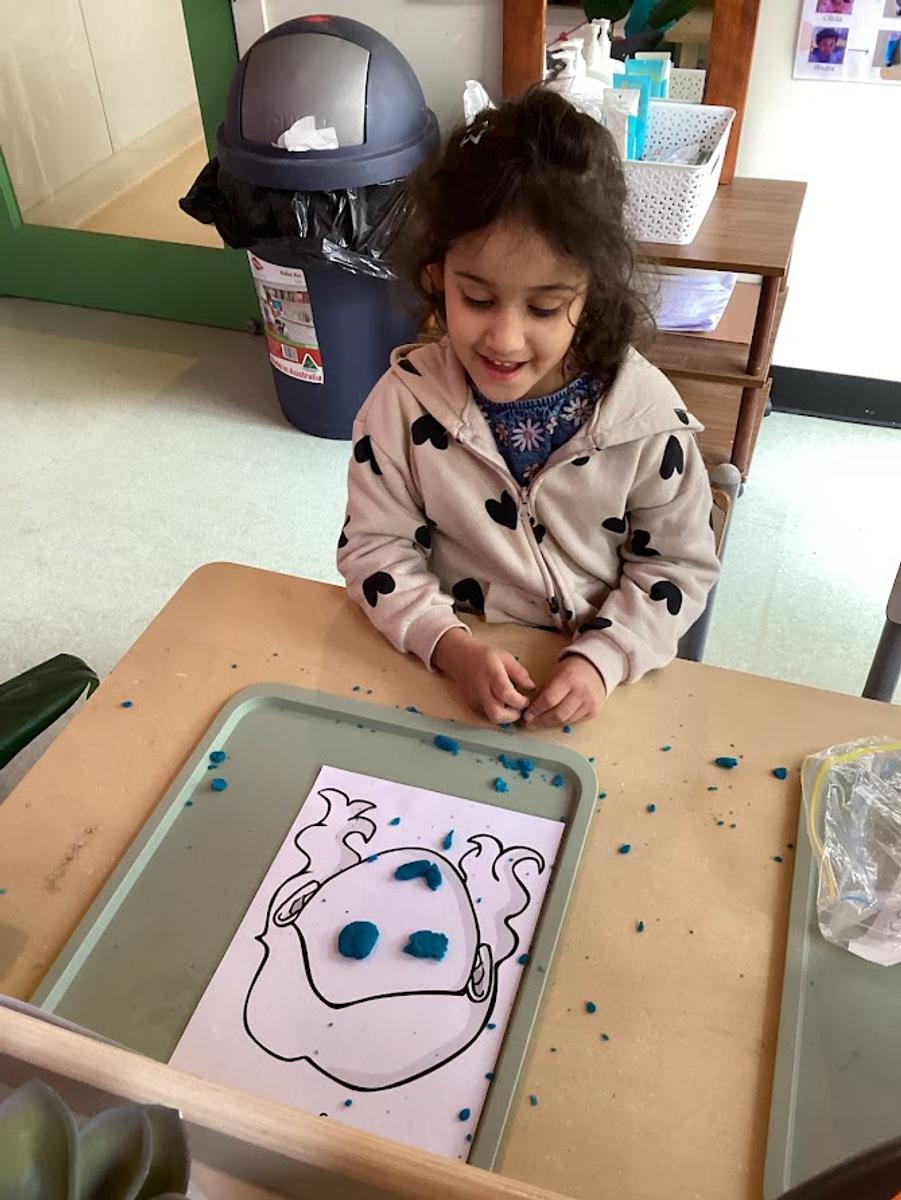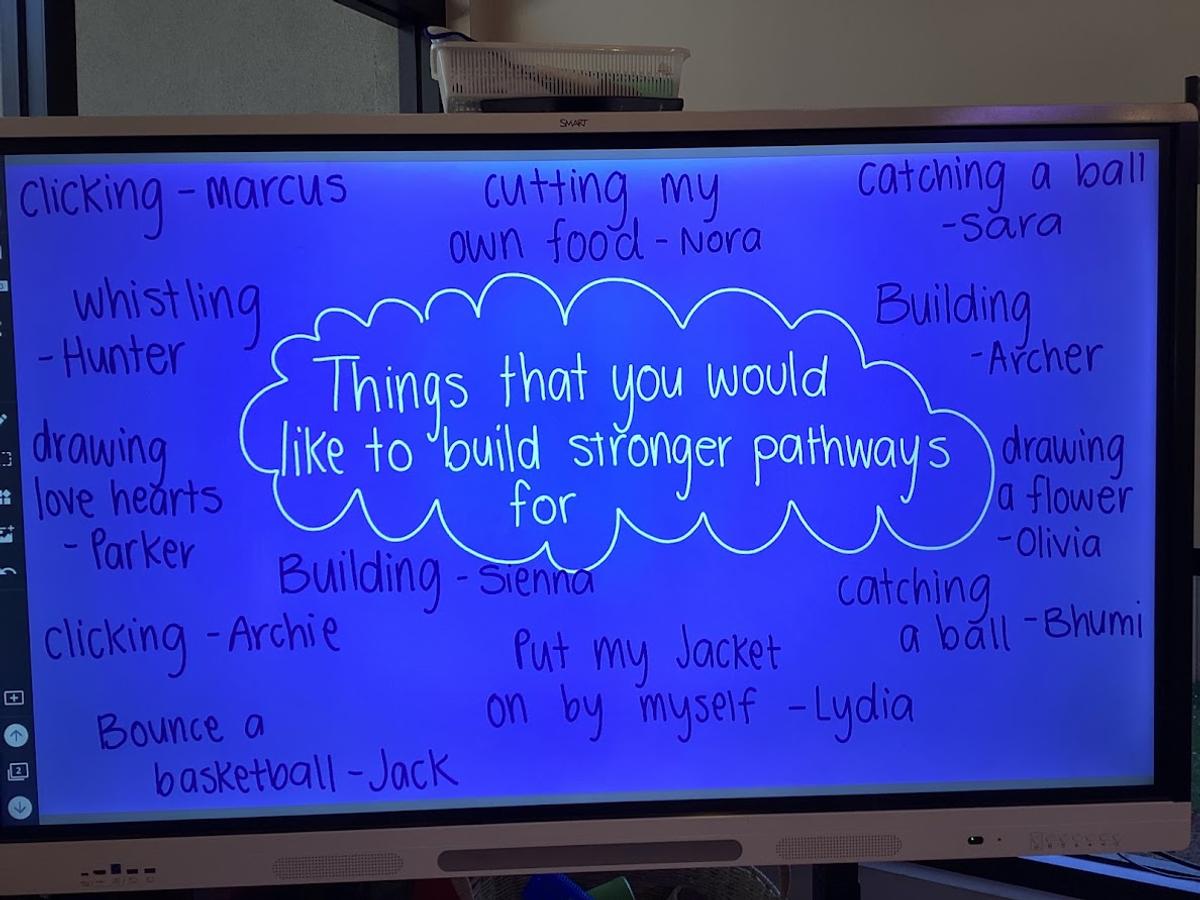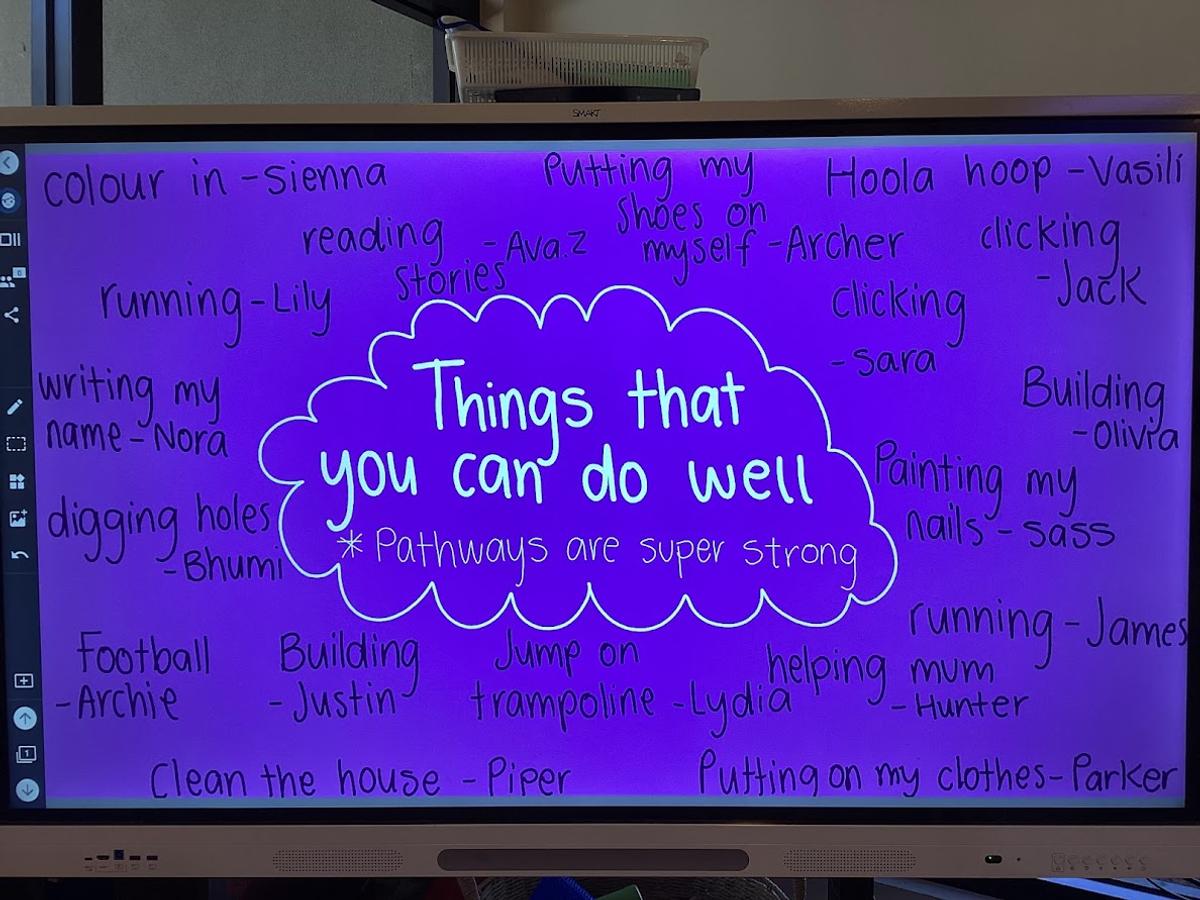4-Year-Old Kindergarten (Field Room)
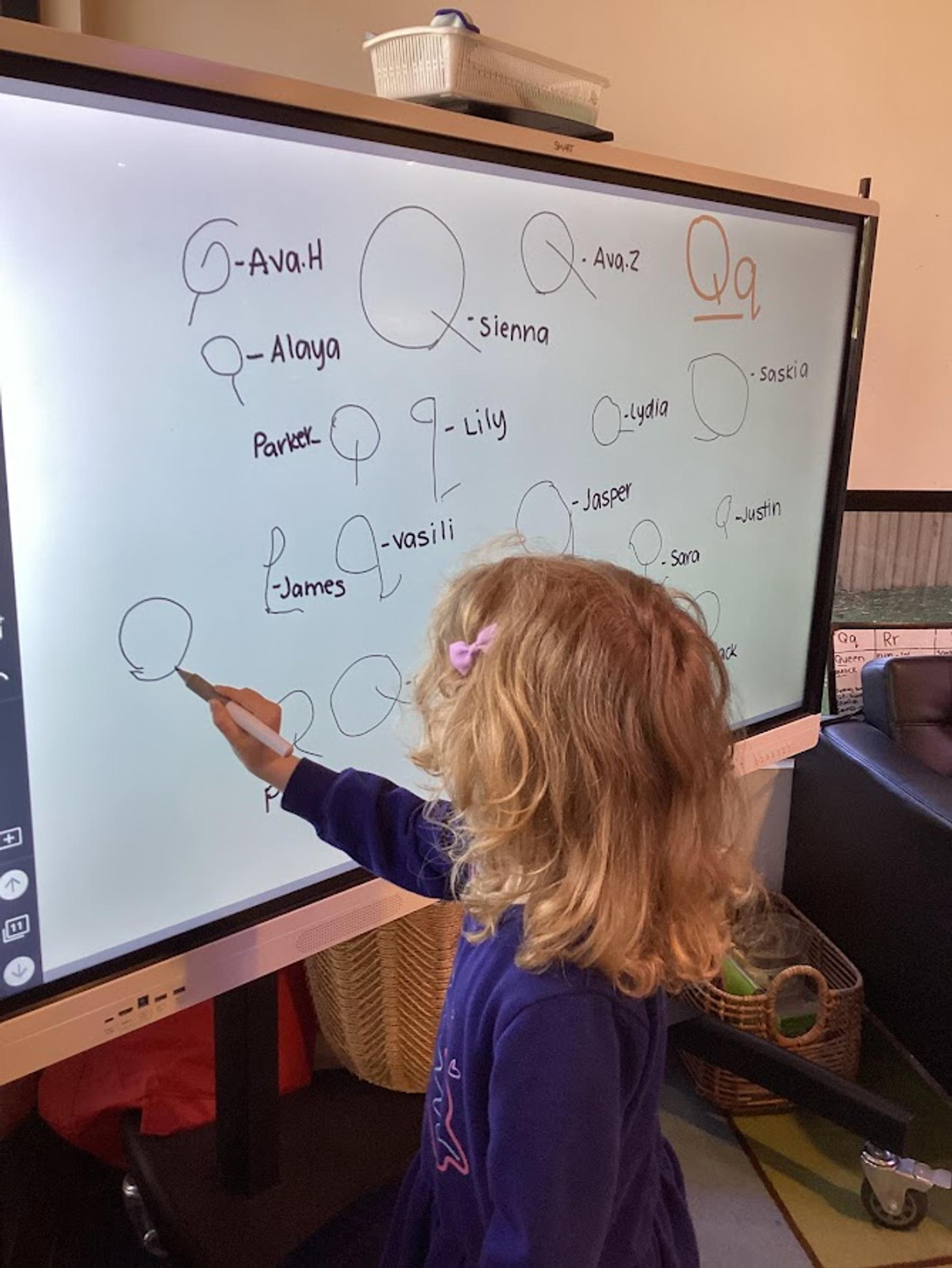
Literacy
Throughout term 2 we have been focusing on our individual sounds. We supported the children's learning in this through: Jolly phonics and Cued articulation. Jolly phonics uses the synthetic phonics method of teaching the alphabet letter sounds in a way that is fun and multi-sensory. Whilst learning the songs we also incorporated cued articulation which is a set of hand cues that assists in teaching the individual sounds in a word. These hand movements are logical – each hand sign represents one sound, and the cue gives clues as to how and where each sound of the letter is produced. Though these 2 programs are not a pair in the way it is taught. We thought it was practical as it assists the children further in their phonic sounds. Each week we would look at 2 or 3 focus letters within group time. Out of group time the focus continued into the learning environment. There were different activities out to further support the children in transferring the knowledge learnt from one context to another. These included: supporting our pencil grip and manipulation of forming the letters either on the interactive whiteboard or at a learning experience. Contribute to words that began with our focus letters throughout the day/week so that we could think about this within our own time and sound out objects. And lastly playing an interactive game that asked us if certain things began with our focus letters. Next term we will fill the children's literacy toolboxes further through extending on individual sounds. Such as (rhyming, syllables, beginning sounds, middle sounds and end sounds and much more).
Emotional Regulation
Over the term we have been focusing on emotional regulation. This was supported by 'Zones of regulation, amygdala's (our brains), bucket filling and bucket dipping'.
Zones of Regulation:
- Sensory regulation: The ability to learn how to manage and respond appropriately to sensory input from their environment.
- Emotional Regulation: The ability to recognise body clues associated with different emotional levels and understand how others think and feel in response to our emotional state.
- Executive functioning: The ability to have cognitive control over our behaviour. Our executive function skills include our ability to sustain attention, plan, problem solving and use positive self-talk. These skills are vital for building a positive foundation for the
Amygdala's:
Learning all about the brain introduces the children to new concepts that further supports their emotional regulation. Children gain a deeper understanding that we need to be kind to our brains and that we all think and act in different ways and that is okay. We are not all the same but there are ways to manage our emotions as well as helping our brains. As a group we discussed that our brain can do things really well and these are when we have created ‘strong pathways’. And sometimes our brain needs support with other things so we can build stronger pathways for them, but these take a little practice.
Bucket filling:
How full is your bucket? - Tom Rath and Mary Reckmyer. The book highlights the importance of being kind, not only to others but, to ourselves too. Using a metaphor of a bucket filler and dipper, the children gained a visual insight to the meaning and were able to gain a deeper understanding. We all discussed as a group what makes a bucket filler or dipper, and we have been hearing this language used a lot throughout our classroom which is beautiful to see: “that filled my bucket” “You’re dipping from my bucket.
Body Safety
‘Everyone’s got a bottom’ By Tess Rowley. This book is the perfect introduction into body safety for children as it uses age-appropriate language. Within the book it uses correct anatomical terms which is important for children as well as giving them words and knowledge to help keep themselves safe. The book uses repetitive language to support the children’s learning further as well as their memory skills. Together as a group we would say “From my head to my toes, I say what goes” As a group we discussed that our bodies are just for ourselves, and we have a right to say no. Of course, we have safe people who need to help us sometimes and that is okay. Through this the children named one safe person for them.

